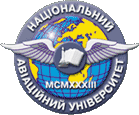Синтез законів керування в контурах стеження та стабілізації інерціальних стабілізованих платформ
DOI:
https://doi.org/10.18372/1990-5548.75.17557Ключові слова:
iнерціальні стабілізовані платформи, контури стеження та стабілізації, ПІД-регулятор, робастний структурний синтез, характеристики платформиАнотація
У статті розглянуто підхід до побудови законів керування контурами стеження та стабілізації інерціальних стабілізованих платформ, що експлуатуються на рухомих об’єктах. Описано етапи проектування регулятора. Представлено процес вибору ПІД-регулятора. Показано та проаналізовано шляхи проектування дискретних регуляторів. Представлена можливість використання ПІД-тюнера засобами MatLab. Обґрунтовано необхідність використання додаткових методів синтезу регулятора. Представлено процедуру структурного робастного синтезу на основі методів змішаної чутливості та формування частотних характеристик. Запропоновано методику визначення жорсткості платформи. Показано результати моделювання, включаючи перехідні та імпульсні характеристики та функції чутливості. Розглядається можливість промислової реалізації контролерів. Запропонований підхід може бути корисним для проектування систем стабілізації широкого класу.
Посилання
J. M. Hilkert, “Inertially Stabilized Platform Technology,” Magazine IEEE Control Systems, no 1, vol. 28, 2008, pp. 26–46. https://doi.org/10.1109/MCS.2007.910256
A. Singh, R. Takhur, S. Chatterjee, and A. Singh, “Design and Optimal Control of Line of Sight Stabilization of Moving Target,” IOSR-JEEE, no. 5, vol. 9, pp. 27–32, 2014. https://doi.org/10.9790/1676-09532732
M. K. Masten, “Inertially stabilized platforms for optical imaging systems,” IEEE Control Systems Magazine, no. 1, vol. 28, 2008, pp. 47–64. https://doi.org/10.1109/MCS.2007.910201
O. A. Sushchenko, “Computer-aided design of robust system for stabilization of information-measuring devices at moving base,” Proceedings of the National Aviation University, no. 3, 2013, pp. 41–48. https://doi.org/10.18372/2306-1472.56.5419.
H. G. Wang and T. G. Williams, “Strategic inertial navigation systems,” IEEE Control Systems Magazine,” vol. 28, no. 1, 2008, pp. 65–85. https://doi.org/10.1109/MCS.2007.910206.
E. Altug, J. P. Ostrowsky, and C. P. J. P. Taylo, “Control of a quadrotor helicopter using dual camera visual feedback,” The International Journal of Robotics Research, no. 5, vol. 24, May 2005, pp. 329–341. https://doi.org/10.1177/0278364905053804
H-P. Lee and I.-E. Yoo, “Robust control design for a two-axis gimbaled stabilization system,” IEEE Aerospace Conference, 2008, 7 p. https://doi.org/10.1109/AERO.2008.4526568
O. A. Sushchenko and A. A. Tunik, “Robust stabilization of UAV observation equipment,” 2013 IEEE 2nd International Conference on Actual Problems of Unmanned Aerial Vehicles Developments (APUAVD-2013), October 15–17, 2013, Kyiv, Ukraine. Proceedings, pp. 176–180. https://doi.org/10.1109/APUAVD.2013.6705318
S. Skogestad and I. Postlethwaite, Multivariable Feedback Control. New York: Jonh Wiley and Sons, 2001, 572 p.
Gu D.W, Petkov P., and Konstantinov M. Robust control design with MATLAB. Berlin: Springer, 2003, 465 p.
A. A. Tunik and O. A. Sushchenko, “Usage of vector parametric optimization for robust stabilization of ground vehicles information-measuring devices,” Proceedings of the National Aviation University, no. 4, 2013, pp. 23–32. https://doi.org/10.18372/2306-1472.57.5530.
O. A. Sushchenko, “Design of robust two-axis systems for stabilization and tracking of information-measuring devices,” Proceedings of the National Aviation University, 2014, no. 1, pp. 31–37. https://doi.org/10.18372/2306-1472.58.6670.
O. A. Sushchenko, “Robust control of angular motion of platform with payload based on H∞-synthesis”, Journal of Automation and Information Sciences, 2016, 48(12), pp. 13–26. https://doi.org/10.1615/JAutomatInfScien.v48.i12.20.
O. A. Sushchenko, “Mathematical model of triaxial multimode attitude and heading reference system,” Proceedings of the National Aviation University, no. 2, 2017, pp. 31–41. https://doi.org/10.18372/2306-1472.71.11745.
##submission.downloads##
Опубліковано
Номер
Розділ
Ліцензія
Authors who publish with this journal agree to the following terms:
Authors retain copyright and grant the journal right of first publication with the work simultaneously licensed under a Creative Commons Attribution License that allows others to share the work with an acknowledgement of the work's authorship and initial publication in this journal.
Authors are able to enter into separate, additional contractual arrangements for the non-exclusive distribution of the journal's published version of the work (e.g., post it to an institutional repository or publish it in a book), with an acknowledgement of its initial publication in this journal.
Authors are permitted and encouraged to post their work online (e.g., in institutional repositories or on their website) prior to and during the submission process, as it can lead to productive exchanges, as well as earlier and greater citation of published work (See The Effect of Open Access).

